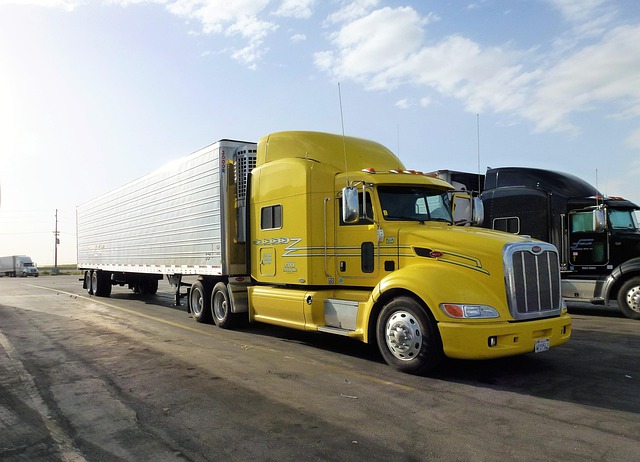Looking to register your car in California? This comprehensive guide walks you through the entire process, ensuring a smooth experience. First, understand the basic requirements for car registration in the Golden State. Next, gather all necessary documents, including proof of ownership and insurance. Then, perform a critical step: DMV VIN verification, which confirms your vehicle’s identity. After that, complete the application, pay the required fees, and receive your official Vehicle Registration Certificate.
- Understand Requirements for Car Registration in California
- Gather Necessary Documents for DMV Visit
- Perform VIN Verification at the DMV
- Complete Application and Pay Fees
- Receive Your Vehicle's Registration Certificate
Understand Requirements for Car Registration in California

Before registering your car in California, it’s essential to understand what’s required by the Department of Motor Vehicles (DMV). In California, car registration involves several crucial steps, including a vehicle identification number (VIN) verification process. This is done to ensure that your vehicle meets all safety and environmental standards set by the state. The DMV conducts this inspection, typically at a local office or drive-through center, to verify the integrity of your car’s components such as brakes, lights, tires, and emissions system.
Additionally, you may consider using a mobile VIN inspection or mobile VIN verifier service, which allows for more convenience by coming to your location. These services can help streamline the process, especially if you have a busy schedule. A mobile vin verification ensures that all documentation is in order, including proof of insurance, ownership, and any necessary emission test results. By understanding these requirements and utilizing available resources like mobile vin inspection services, you can ensure a smoother registration experience for your vehicle in California.
Gather Necessary Documents for DMV Visit

Perform VIN Verification at the DMV

Before registering your car in California, performing a DMV VIN (Vehicle Identification Number) verification is a crucial step. This process ensures that the vehicle you’re looking to register is genuine and has not been reported stolen or had any outstanding issues. You can conduct this vin inspection at your local DMV office or, for added convenience, opt for a mobile vin verification service.
For a standard DMV vin verification, bring along the required documents such as the title, registration papers, and identification. A trained specialist will use specialized equipment to cross-reference your VIN with national databases, providing instant results. Alternatively, consider utilizing a mobile vin inspection service that brings this process directly to you. This option is particularly appealing for busy individuals or those who prefer a more streamlined approach to car registration.
Complete Application and Pay Fees

To register your car in California, you’ll need to complete a series of steps, starting with the DMV VIN verification. Begin by gathering all necessary documents, including your vehicle’s registration from the previous state, proof of insurance, and identification. Then, fill out Form MV-5, which is the Application for Title and Registration. This form requires detailed information about your car, such as make, model, year, and Vin number.
Once your application is complete, it’s time to pay the associated fees. These can vary based on the type of vehicle you own and whether you’re transferring a title or registering a new purchase. You can typically pay these fees online through the California DMV website, by mail, or in person at a local DMV field office. After successfully completing this stage, including the mobile vin verifier or vin inspection, you’ll be one step closer to legally registering your vehicle in California.
Receive Your Vehicle's Registration Certificate

After completing your vehicle’s purchase, it’s time to receive the official registration certificate. This document is crucial for legal car ownership in California. To obtain it, you’ll need to conduct a DMV VIN verification process, ensuring that all details related to your vehicle are accurate and up-to-date. A mobile vin inspection or using a mobile vin verifier can be convenient options to streamline this step.
The registration certificate is more than just a piece of paper; it serves as proof of ownership and insurance, and it’s essential for any road-related transactions. With this certificate in hand, you’re one step closer to legally registering your new car with the California Department of Motor Vehicles (DMV).
Registering a car in California involves several straightforward steps, from understanding the requirements to gathering essential documents and completing the application process. Ensure you have your vehicle’s unique Identification Number (VIN) verified at the Department of Motor Vehicles (DMV) for accurate record-keeping. By following these steps and providing all necessary documentation, you’ll promptly receive your vehicle’s registration certificate, legally securing your car in the Golden State.



